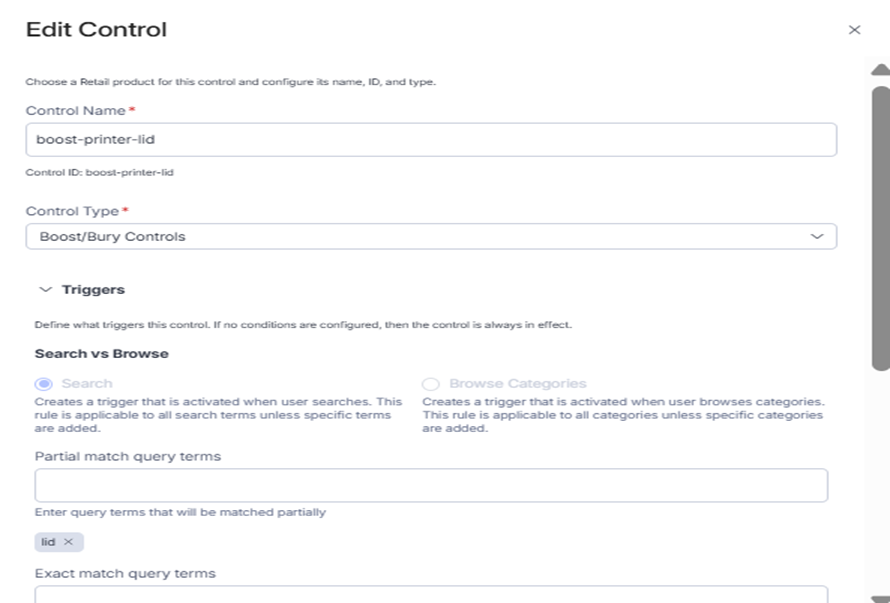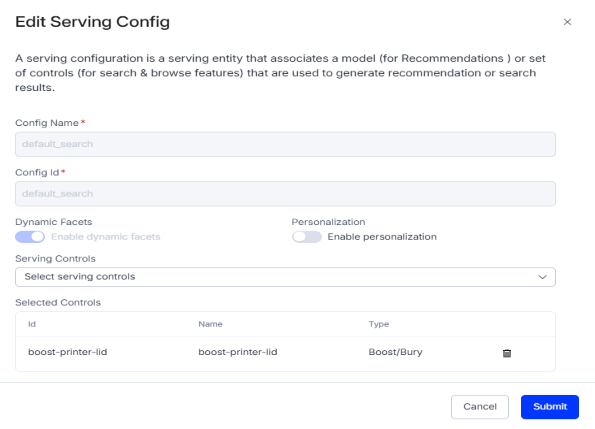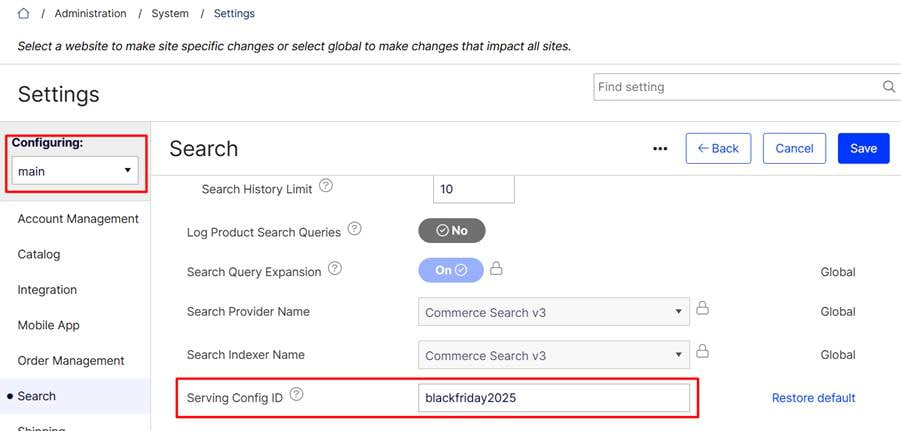Integrating Commerce Search v3 (Vertex AI) with Optimizely Configured Commerce

Introduction
This blog provides a technical guide for integrating Commerce Search v3, which leverages Google Cloud's Vertex AI Search, into an Optimizely Configured Commerce environment.
This integration is engineered to significantly enhance the product discovery process for B2B e-commerce platforms.
By utilizing advanced, e-commerce-specific search technologies, organizations can simplify the B2B purchasing journey and improve conversion rates.
The Strategic Advantage of Vertex AI Search
Opting for Google Vertex AI Search over traditional solutions like Elasticsearch provides several key architectural and operational advantages.
- Advanced Semantic Understanding: The system leverages Google's sophisticated natural language models to comprehend user intent, context, and semantics, which leads to more accurate and relevant search results.
- Self-Learning Ranking Models: It automatically refines search relevance over time by learning from user behavior patterns. This minimizes the need for continuous manual tuning and rule configuration.
- Reduction in "No Results" Queries: Through intelligent query expansion and robust synonym matching, the platform effectively reduces the frequency of zero-result queries, thereby improving user engagement and conversion rates.
- Automated Dynamic Faceting: The system automatically identifies and presents the most relevant filters and facets based on the specific search context. This enhances product discoverability without requiring manual facet configuration.
- Native Vector Search Capabilities: It has built-in support for vector-based retrieval for modern semantic and generative AI applications.
- Reduced Maintenance Overhead: As a fully managed Google Cloud service, Vertex AI Search eliminates the operational burden of manual infrastructure management, updates, and scaling that is typically associated with self-hosted search solutions.
- Ecosystem Integration: It offers seamless integration with the Google Cloud ecosystem, including services like BigQuery and other Vertex AI models, for a comprehensive, AI-driven experience.
- Enterprise-Grade Infrastructure: The platform is built on Google Cloud's secure, compliant, and highly available infrastructure, making it suitable for large-scale enterprise applications.
For more information refer this URL: - Commerce Search v3 overview
Implementation Framework
A successful implementation requires meeting initial prerequisites and following a structured deployment process.
Prerequisites
- Platform Version: Your environment must be on Optimizely Configured Commerce version 5.2.2506.1899+sts or a subsequent release.
- Language Tagging: All languages utilized must be configured with a language tag.

- Authentication: Optimizely ID SSO is mandatory for accessing the Google Vertex AI settings.
Implementation Steps
Commerce Search v3 is considered fully functional upon completion of the following sequence:
- Review custom extensions.
- Integrate with ODP.
- Create integration jobs to sync user events and historical orders.
- Enable Commerce Search v3 in the Admin Console
- Test Commerce Search.
Advanced Configuration and Personalization
Post-implementation, you can customize search behavior via the Admin Console under Marketing > Commerce Search v3.
Understanding Serving Controls and Configs
The architecture's customization capabilities are cantered around Serving Controls and Serving Configs.
- A Serving Config is a serving entity that defines the rules and behavior for search results, such as boosting, filtering, and query expansion. It can also associate a model for recommendations.
- A Serving Control is a rule that determines the conditions under which a specific Serving Config is applied. The condition triggers the control, and an action takes place.
A Serving Config, while capable of existing independently, is only activated when it is referenced by a Serving Control. Conversely, a Serving Control is non-functional unless it is linked to a valid Serving Config.
This modular architecture allows for precise, dynamic personalization of the user experience at runtime without altering core backend logic.
Configuration Example: Product Boosting
To prioritize specific products for a given search query, you can create a serving control.
- Navigate to Marketing → Search → Commerce Search v3 → Serving Controls → Create Control.
- Define the Trigger: Set the Control Type to Boost/Bury Controls and specify the trigger condition. For example, enter 'lid' in the Partial match query terms field to activate the rule on searches for that term.

- Define the Action: In the Rule section, specify the products to be boosted using their GUIDs. The rule expression supports operators including >, <, >=, <=, =, and:.
- E.g.id: ANY ("8dfe59b4-8c19-4ed2-b3a6-b2f700a9000d", "fa329f4c-f530-46a9-a53e-b2f700a4728e", "34eba131-5d28-407d-becb-b2f700ae4064")

- Associate Control with Config: Add the newly created serving control to the relevant serving configuration. This action ensures that when a user searches for 'lid', the products with the specified IDs are boosted in the search results.

Operational Considerations
- Serving Config ID: Ensure the correct Service Config ID is specified in the Admin Console settings at Administration > Settings > Search > Serving Config ID. If a custom ID is being used, it must be correctly entered here.

- Indexing and Synchronization: Any updates made to a Serving Config, or a Serving Control require indexing to be reflected on the live website. After initiating indexing, it may take approximately 20–25 minutes for the changes to fully sync with GCP and become visible to users. The system checks for matching serving controls at runtime and applies the associated logic.
Result on the storefront:
The products with IDs “2A126080”, “302NR04021”, “2FG26070” are prioritized to appear at the top of the search results.

AI-Powered Search & Natural Language Processing (NLP)
When a shopper enters a search like:
-
"printer under $100"
-
"eco-friendly office supplies"
-
"fastest laser printer"
Vertex AI’s LLM (Large Language Model) does the following:
Semantic Search – Understands intent beyond keywords (e.g., "under $100" = price filter).
Synonym & Misspelling Handling – Recognizes "printer" even if typed as "printr".
Contextual Ranking – Prioritizes products matching both relevance and business rules (e.g., promotions, stock availability).
Example:
In the demo, a search for "printer under $100" dynamically filters printers priced ≤$100

Limitations of Commerce Search v3:
Please read this link: Limitations-of-Commerce-Search-v3
 |
Optimizely Consulting & DXP Services | CMS, Commerce, AI Optimizely is an open, extensible platform providing consistent Digital Touch Points. With the need for going digital increases, so does the demand for a consistent buying experience. Connect content, data, and commerce platforms, enabling access to a seamless buying experience and better back-end connectivity for customers. Leverage Optimizely’s tools to accelerate KPI growth and enhance ... www.royalcyber.com |

Comments